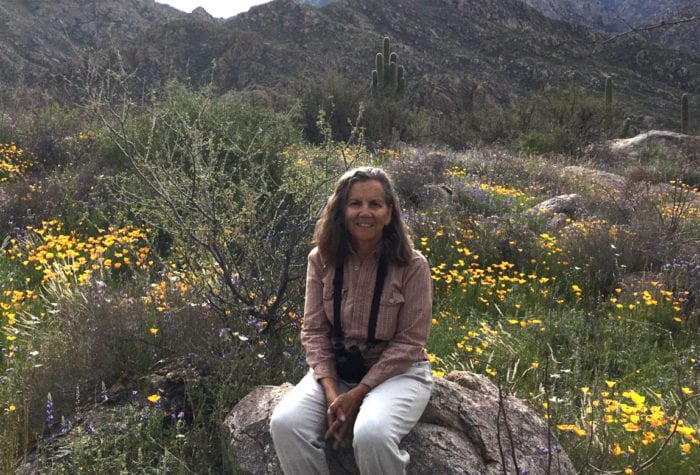-
Identify and conserve late summer habitat where greater sage-grouse raise their young
Imagine you’re a sage-grouse hen with chicks looking for habitat on a hot August day. You’d want to hang out in a cool, green, lush meadow, right? Indeed, that’s their preference, as confirmed by recent research from the northern Great Basin. Unfortunately, the cool, green, moist environments that sage-grouse hens and chicks need in late summer are also some of the most limited and threatened habitats in the sagebrush steppe.
Our recommendation: identify and specially protect these habitats as key to sage-grouse survival over the hot summer months.
By the way, reintroducing beaver to habitats is a great way to restore streams, creeks, and wet meadow habitat. Beaver do a wonderful job, and they work for free.
-
Identify and conserve winter habitat where greater sage-grouse feed and take shelter
Unlike summer habitat, there is ample winter habitat for sage-grouse in Oregon, but current plans fail to protect those areas.
Our recommendation: identify and bar any disturbance to these stands of tall sagebrush shrubs that sage-grouse depend on for food and shelter during snowy winters.
-
Mitigate climate change impacts on greater sage-grouse and sagebrush habitats
The Biden administration has made climate change adaptation a centerpiece of its conservation agenda, and now the Bureau of Land Management is considering how best to manage sage-grouse and other flora and fauna in a warming world.
Our recommendation: protect higher elevation, cooler environments and connective corridors between them to aid species seeking refuge from climate effects, while ensuring that permitted land use and development don’t compromise the ecosystem’s ability to withstand warmer temperatures and more frequent drought.
-
Manage domestic livestock grazing to support greater sage-grouse conservation and ecosystem resilience
Livestock grazing is the most pervasive use of sage-grouse range in Oregon, with upwards of 12 million acres of public lands permitted for grazing. While the debate continues over the exact effects of grazing on grouse habitat, there are some common-sense steps the Bureau of Land Management can take to both better understand potential impacts and ensure grazing does not unnecessarily harm the species.
Our recommendation: ensure grazing sustains robust, resilient, sagebrush habitats, while setting aside ungrazed areas for comparative research; remove or modify unnecessary fences and livestock water developments, and manage livestock to avoid contributing the spread of exotic weeds; and allow grazing permittees to voluntarily retire their grazing permits as part of a comprehensive land management program.
-
Preserve greater sage-grouse priority habitat from new disturbance
Sage-grouse are quite sensitive to human disturbance in their habitat, including development of energy facilities, transmission lines, cell phone towers, mining operations, roads and other infrastructure, as well as large-scale vegetation management projects.
Our recommendation: limit and even restrict development and disturbance in the most essential sage-grouse habitat areas.
-
Plan and manage travel in greater sage-grouse habitat
This one is simple, and something the Bureau of Land Management has previously identified as important to conserving the bird’s habitat.
Our recommendation: conduct new transportation planning in eastern Oregon, and with an eye toward conserving sage-grouse and other wildlife. These public processes determine which routes should remain open, what routes should be closed, and areas that should be preserved from off-road vehicle use to protect sensitive natural resources.
-
Retain, designate and manage sagebrush reserves for greater sage-grouse and other fish and wildlife
The science is clear: designating and protecting habitat reserves is more likely to conserve and recover sensitive and imperiled species than not. Thankfully, the BLM’s current sage-grouse plan for Oregon designates important and expansive habitat areas for sage-grouse, but they could be larger, and better protected.
Our recommendation: designate and protect habitat reserves, climate refugia and movement corridors to support sage-grouse and other wildlife as they contend with land use, fire, invasive species and climate change.
There you have it, ONDA’s seven steps to save sage-grouse.
We’ll cover sage-grouse natural history and conservation efforts in more depth in our Spring+Summer 2022 issue of our Desert Ramblings newsletter; look for that in your mailbox if you are a current member, or join today to become one. Thank you for joining our campaign to conserve sage-grouse in Oregon’s high desert. Now you’re ready to speak out on behalf of grouse and their habitat as the federal planning process proceeds.
